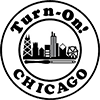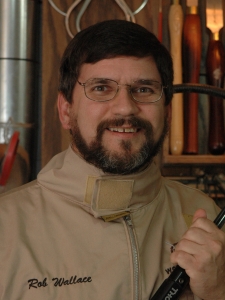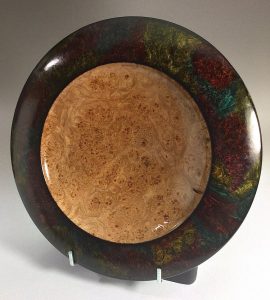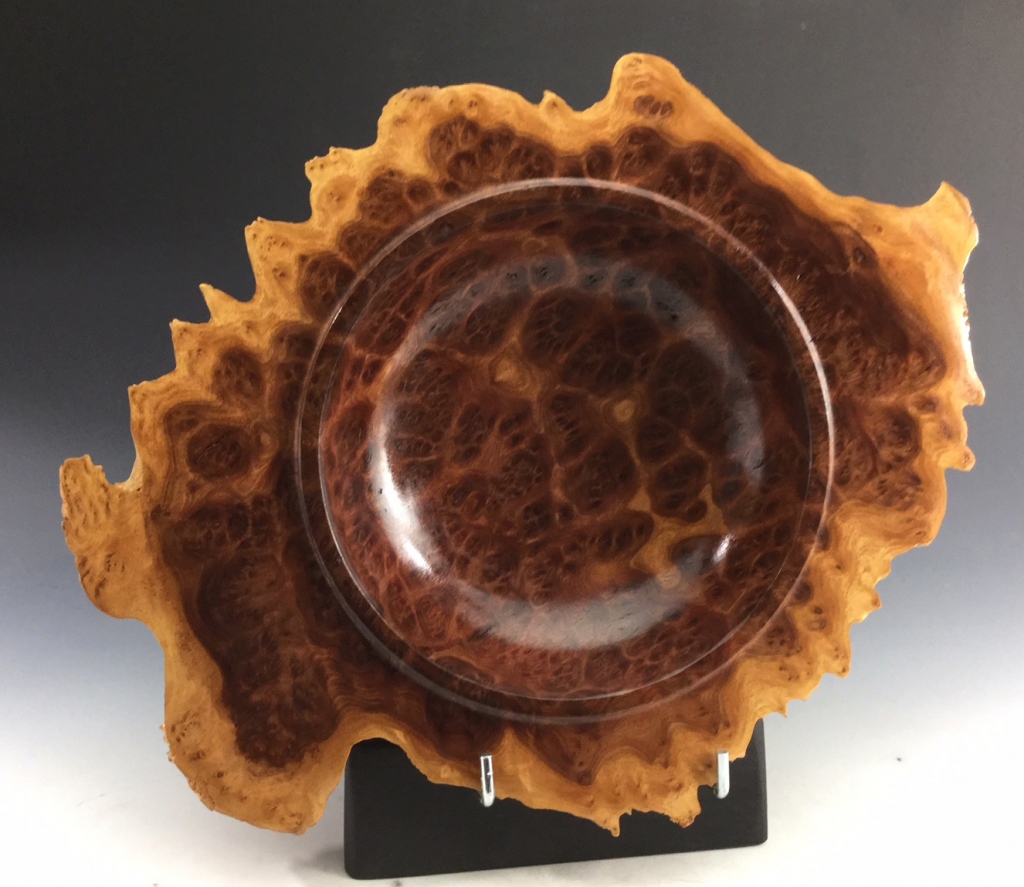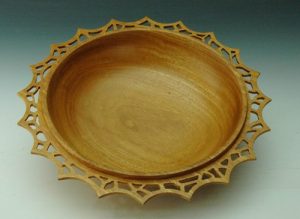ROB WALLACE
Rob Wallace holds a Ph.D. in Botany from Rutgers University (New Jersey), and is a biology professor at Iowa State University where he teaches courses in biological evolution, the evolution and phylogeny of plants, plant taxonomy and systematics, economic botany, and organismal diversity. He has been a woodworker since before his teen years, and enjoys all aspects of woodworking, especially woodturning. He is an active member of the American Association of Woodturners (AAW), and was elected as a member of the Board of Directors of the AAW, serving a term on the Board from 2013-2016. He has served on several committees of the AAW, including the Symposium Committee, the Bylaws Re-Write Committee, the Safety Committee, and the Woodturning Fundamentals Committee, as well as serving on the AAW’s auction crew as an auctioneer. Locally, he has been a club member and officer of the Ames Woodworkers Club (Iowa) for over 25 years. He has been coordinating the local group of woodturning enthusiasts since 2005, and in 2011 the ‘Ames Area Woodturners’ was chartered as an official chapter of the American Association of Woodturners. He has presented demonstrations on a wide range of woodturning and woodworking topics to regional and national groups, including both live and virtual versions of the annual Woodturning Symposium of the AAW. Wallace also serves as a member of the Board of Trustees of the Octagon Center for the Arts in Ames, Iowa and has served several terms as President of the Board. He is a member of the Ames Community Arts Council, and serves on Iowa State University’s Museums Advisory Committee. He participates annually in local arts events, often participating by doing live demonstrations of woodturning at various places including the Octagon’s Art Festival, the Ames ArtWalk, and for various community and educational groups. Recently he has provided virtual interactive remote demonstrations on woodturning and other topics to woodturning groups in different locations throughout the country.
Demonstration Topics
The Physics of Woodturning
Understanding how the lathe works to transfer rotational forces to allow the tool to remove material is important for every woodturner to understand not just HOW to do the various methods of tool use, but an understanding of WHY the tools are used in correct technique can improve every woodturner’s skills. This presentation explains the forces involved with woodturning and how they are transferred from lathe, to wood, to tool – understanding how to control those forces efficiently and with full control throughout the process results in safe and efficient woodturning. The geometry and position of woodturning tools is also considered, along with understanding the importance of tool rest position, and adequate work support. Through a ‘no math’ approach of reviewing basic concepts of motion and energy, woodturners will benefit by understanding how to manage forces and tool use to improve their overall turning technique, and make corrections as needed with knowledge of how to control the forces efficiently and safely while they turn.
Complexity and Diversity of Wood
This demonstration reviews wood as a structural material and as an artistic medium by explaining the cellular structures involved with wood development and maturation, how these structures affect the mechanical and aesthetic properties of wood, and how color, grain, and figure develop. The topic of wood drying, wood movement, and methods used to minimize defects and wood degrade are discussed, along with a review of methods available to the woodturner to manage the wood they use, particularly with wet (“green”) wood. Aspects of wood toxicity are also presented in the context of safety for woodturners. Finally, an overview of wood diversity is presented, emphasizing an understanding of “domestic” and “exotic” woods, properties of these to be aware of regarding cutting/machining, use of abrasives, and use of adhesives, along with a general discussion of wood diversity and the many species that are available to the woodturner.
